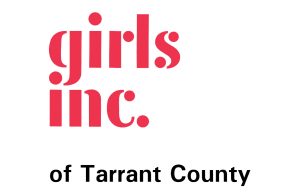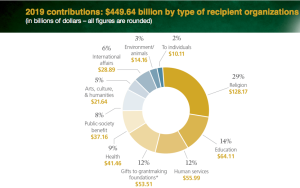The willingness to endure a little laughter can prove lucrative for a charity. Unfinished renovations to Wrigley Field at the start of the current baseball season resulted in the stadium offering only two working bathrooms for 34,000 beer-swilling Chicago Cubs fans during the team’s home opener.
“Chicago Cubs fans, in typical resourceful fashion, would take their beer cups, which were now empty of beer, and were refilling them,” said Jim Miller, owner and founder of Chicago-based Charityauctioneer.com.
Embarrassing for Cubs ownership as it was, the incident presented an opportunity. The team hosted its annual Brick and Ivy Ball and Auction benefiting children and families throughout Chicago less than a week later. A Cubs associate approached Miller, who was serving as auctioneer, just 10 minutes before the auction with a new item. The prize was a one-of-a-kind “V.I.Pee” card, which gave the bearer one year’s access to a private Wrigley Field bathroom suite used by attending luminaries.
The lot fetched a laugh at the Cubs’ expense, according to Miller. But it also fetched $2,400 for Cubs Charities.
The right charity can make donors’ wallets willingly open. The correct stimulation can make donors’ wallets open joyfully. And, little stimulates joyful donating like offbeat, yet well-considered, charity auction lots. Even better, quirky lots offer ideas easily adapted by smaller charities.
Fundraisers don’t have to draw on being embarrassed to keep their auction audiences intrigued. Consider a wine package with an estimated value of $5,000. What made this package more than just a hodgepodge of vintages was its theme. The Jefferson Awards Foundation, which recognizes and advances young leaders and entrepreneurs, earlier this year amassed one bottle of each of Wine Spectator magazine’s 2014 top 100 wines — from a 2011 Dow Vintage Port to a Saint Clair Pinot Noir Marlborough Pioneer Block 16 Awatere.
The Wilmington, Del.-based foundation did not disclose the final bid, but the individual wines were valued at more than $4,700 — assuming one could find all of them.
Sometimes an item gains cachet from being touched by a star. It’s all the better if that star has a sense of humor. In April, a copy the 2008 book Captain Kirk’s Guide to Women signed by William Shatner was listed as “priceless” (albeit with a minimum bid of $10). Granted, it’s easier to have a sense of humor when the sponsoring organization is one’s own. In this case it was Shatner’s Hollywood Charity Horse Show, which raises funds for children’s charities.
When bids hit six figures, however, a touch of luxury might just trump a sense of humor. Take a 2015 Kia K900 Luxury Sedan customized and actually driven by Cleveland Cavaliers superstar LeBron James. (Touches include a serious audio system and “LBJ Icons in Headrests.”) The lot fetched offers approaching the car’s $170,000 value long before the auction ended, which benefitted The LeBron James Family Foundation of Akron, Ohio.
What’s better than memorabilia touched by a star? For some, being close enough to touch said celebrity. A simple lunch and photo op isn’t unusual enough to cut through the clutter of these types of offerings. Even lunch with Warren Buffet is showing some fatigue: The lot earned a high-water bid of $3,456,789 for the Glide Foundation in 2012, which aids San Francisco’s homeless population. More recently, it has gone for a mere $1 to $2 million.
Howard Schultz, CEO of Starbucks Coffee, recently offered a chance for two people to join him for a 30-minute rare coffee tasting in the company’s hometown of Seattle. The lot benefited Washington, D.C.-based Robert F. Kennedy Human Rights (formerly The Robert F. Kennedy Center for Justice and Human Rights), and featured an estimated price of $15,000. Charitybuzz, which hosted the online auction on behalf of the organization, did not release the final gavel price. The final price often is secret. New York City’s P.S. 11 elementary school declined to discuss the winning bid to have Gilbert Gottfried, the comedian with “the most grating voice in the universe” according to the lot description, record an outgoing voicemail message.
The definition of “celebrity” can be expanded with positive results. This past April, registrants for a fundraising auction at the Columbus Catholic Schools in Marshfield, Wisc., were sent an email before the event, urging them to bring something to put into a wallet carried around by beloved Chaplain Nathaniel Kuhn. Donors contributed movie passes, gift certificates, iTunes gift cards, and cash. “We have no idea what’s in that wallet, and neither does the IRS,” event coordinator Sherry Truhlar, president of Arlington, Va.-based Red Apple Auctions, said at the time of the auction.
The wallet initially went for $2,200, but that wasn’t the end of its fundraising power. The day before the event, one of the school’s students was diagnosed with cancer. The winning bidder announced he would give the wallet to the student’s family if attendees raised another $2,200 for the school. Up went the paddles, with more than 22 people pledging $100 apiece. The bidder immediately gave the wallet — which contained an estimated $1,500 in cash in addition to the other items — to the student’s family.
Alexandra Saavedra, digital marketing manager at Beaverton, Ore.-based fundraising firm Greater Giving, recalled that in 2009 Monsignor Tim Murphy offered a chance to watch him take his first skydive – at age 69. The lot netted $16,200 for Central Catholic High School of Southeast Portland, Ore.
Murphy’s “Leap of Faith” was high-risk, granted, but it was also low-tech, and easily duplicated by most organizations. A lot offered during a 2014 event benefitting the Arthritis Foundation in Honolulu gave one participant a me-first when leaving: The winner’s car, along with coffee, water, and cookies, was pulled first from the parking. The winner received help loading in any purchases made during the fundraiser. This simple lot netted the foundation more than $500, according to Saavedra.
Director, writer, and producer Michael Mann recently valued a chance to serve as an unpaid summer intern with his company Forward Pass at $5,000. Duties, according to the lot description, ranged from script coverage and research to handling phones and greeting guests.
Five thousand bucks might seem like a lot for a chance to perform “general office duties,” even if one does support the ACLU of Southern California, which received the bounty. But Ben Erwin, vice president of business development at auction website Charitybuzz, said “there is quite a market out there for these internships… for [bidders] themselves, for someone with a child who is a student at a major university who is trying to get a foot in the door in a specific industry.”
Erwin noted that Charitybuzz only lists internships which are specifically created for charity auctions. “It’s not like…you are taking away the spot of someone who might be more qualified but who doesn’t have $50,000 to spend.”
Celebrity-based items often give rise to unusual terms and conditions. Football analyst John Madden offered a chance for four people to watch a Sunday’s worth of games in his “state of the art facility that includes 9 massive flat screen HD televisions” at some point during the 2015 season. But, the offer was “[n]ot valid on dates when Raiders are playing at home.”
No explanation was given on why that particular limit, although one can’t help wondering whether Madden, who served as head coach during the Raider’s glory days, wishes to spare bidders his more colorful commentary on the team’s current woeful state. (Besides, such language wouldn’t be in the spirit of Robert F. Kennedy Human Rights, the designated beneficiary.)
Do unique art and jewelry work as auction lots? Red Apple Auction’s Truhlar had her doubts. “Jewelry is one of the hardest items to sell at a benefit auction,” she said. “A tangible quirky item might not be readily available, but you’ve got to like it. Custom-crafted jewelry, like Mozart’s signature or notes from a Beethoven composition might be nice, but a buyer might say ‘I’m not going to wear it: It’s not my style.’”
The U.S. Fund for UNICEF, however, put its faith in some unusual art, specifically, 44 Star Wars stormtrooper helmets, which were decorated by a variety of artists. Stormtroopers might seem an oddly militaristic motif for a nonprofit geared toward eliminating preventable children’s deaths. “I look at it as stormtroopers for better,” said Caryl Stern, the organization’s president and CEO. “They’re out there fighting for good.”
Even so, given the serious nature of the organization, wasn’t she afraid the auction’s offbeat nature would undercut the gravitas of its mission? “You have to be serious about wanting to change the world, but that doesn’t mean you can’t enjoy the journey of doing so,” Stern said.
The helmets, which were initially offered on May 4 (as in “May the fourth be with you”) of this year, bore minimum bids of $5.04. Bids for most reached well into the hundreds of dollars by the auction’s close.
Even quirkiness has its limits. Charitybuzz’s Erwin was once approached by someone who wanted to offer a framed pair of concert-worn – that is, used – underwear from Justin Bieber.
“This was at the height of Bieberdom, when he truly was the biggest celebrity around,” Erwin said. “Anything of his was going for record amounts of money.” But Erwin didn’t even listen to the full pitch the donor wanted to make. “That was something which, even if they told me it would raise a million dollars, I would never even dream about putting on our website. It is something which is too quirky, and too unique, and which could be offensive and just flat-out weird.” NPT











